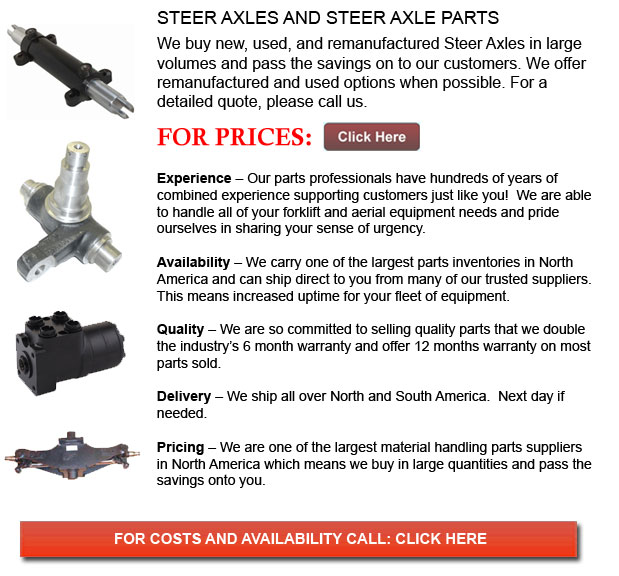
Forklift Steer Axle - The description of an axle is a central shaft for revolving a wheel or a gear. Where wheeled vehicles are concerned, the axle itself may be attached to the wheels and rotate together with them. In this particular case, bearings or bushings are provided at the mounting points where the axle is supported. On the other hand, the axle could be attached to its surroundings and the wheels could in turn turn all-around the axle. In this particular instance, a bushing or bearing is situated inside the hole in the wheel so as to enable the wheel or gear to revolve around the axle.
If referring to trucks and cars, some references to the word axle co-occur in casual usage. Generally, the term refers to the shaft itself, a transverse pair of wheels or its housing. The shaft itself revolves along with the wheel. It is normally bolted in fixed relation to it and called an 'axle shaft' or an 'axle.' It is likewise true that the housing surrounding it that is normally referred to as a casting is otherwise called an 'axle' or occasionally an 'axle housing.' An even broader definition of the term refers to every transverse pair of wheels, whether they are attached to one another or they are not. Hence, even transverse pairs of wheels in an independent suspension are frequently called 'an axle.'
The axles are an essential component in a wheeled vehicle. The axle works so as to transmit driving torque to the wheel in a live-axle suspension system. The position of the wheels is maintained by the axles relative to one another and to the motor vehicle body. In this system the axles must likewise be able to bear the weight of the vehicle plus whatever cargo. In a non-driving axle, as in the front beam axle in some two-wheel drive light vans and trucks and in heavy-duty trucks, there would be no shaft. The axle in this particular situation works just as a steering component and as suspension. Many front wheel drive cars consist of a solid rear beam axle.
There are various kinds of suspension systems wherein the axles serve only to transmit driving torque to the wheels. The angle and position of the wheel hubs is a function of the suspension system. This is normally seen in the independent suspension seen in the majority of brand new sports utility vehicles, on the front of numerous light trucks and on the majority of new cars. These systems still consist of a differential but it does not have connected axle housing tubes. It could be connected to the motor vehicle frame or body or even could be integral in a transaxle. The axle shafts then transmit driving torque to the wheels. The shafts in an independent suspension system are like a full floating axle system as in they do not support the vehicle weight.
The vehicle axle has a more ambiguous description, meaning that the parallel wheels on opposing sides of the vehicle, regardless of their kind of mechanical connection to one another.
![]() Click to Download the pdf
Click to Download the pdf
Forklift Parts
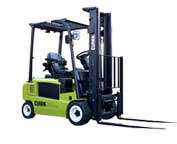
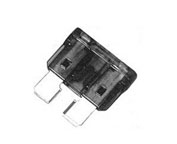
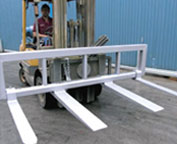


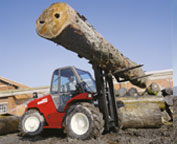

Lift Parts Express
TOLL FREE: 1-888-695-7994
Boise City, Idaho
forkliftpartsboisecity.com
Email Us
About Us


